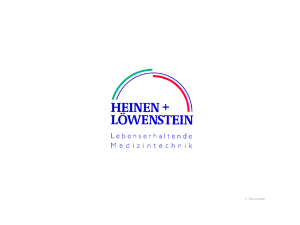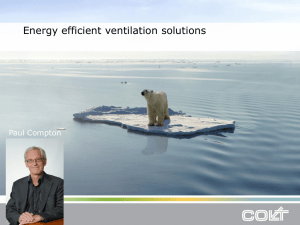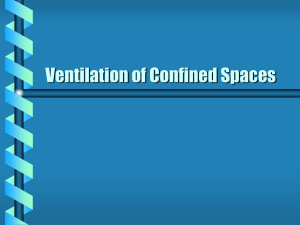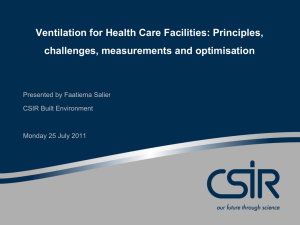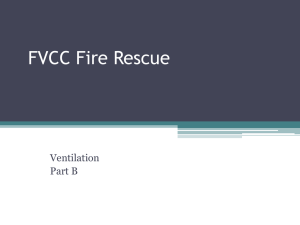Parts F and L for Ventilation
advertisement
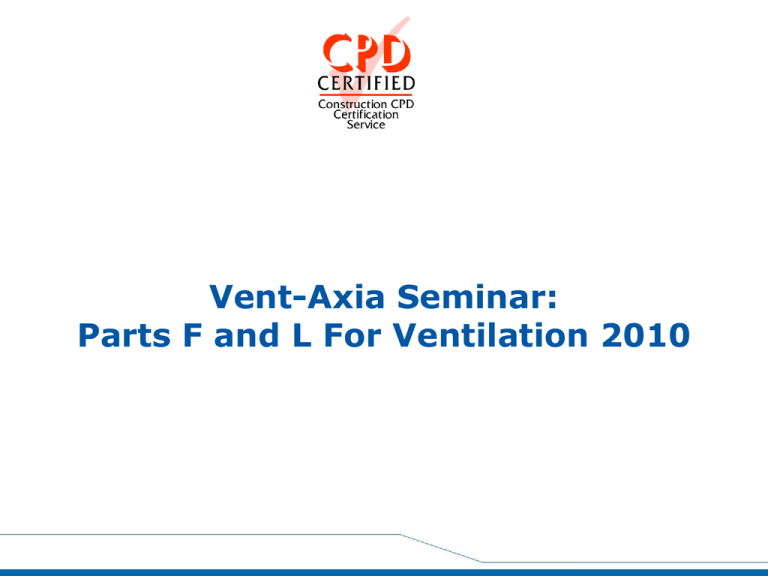
Vent-Axia Seminar: Parts F and L For Ventilation 2010 Parts F and L 2010 Agenda • • • • • • • • Part F History The New Structure Design Performance Part F Ventilation Systems Air Permeability and Performance Part L Main Changes and Overview Competent Person’s Scheme Summary and Questions Vent-Axia Since 1936 Company Locations The largest UK ventilation employer Over 800 employees 4 locations Dudley Metals and Systems Swindon - Motors Crawley Plastic Assembly Reading – Plastic Extrusions History • 1992 – Part F – Bathroom and Kitchens needed extract rates for the first time • 1995 – Utility rooms were added • All rates were intermittent • Refurbishment followed good practice and used the same solutions 1992 -1995 Intermittent Fans Bathroom 15l/s (100mm) Utility Room 30l/s (150mm) Added 1995 Kitchen 60l/s (150mm) 2006 • New Part F Regulations expanded to include intermittent and continuous systems • New Part L Regulations developed because of the Energy Performance of Buildings Directive (EPBD) in Europe • Direct influence on product design • SAP became the standard tool for calculating the energy use of domestic buildings 2006 Intermittent and Continuous Intermittent Fans Passive stack ventilation MEV MVHR New Structure 2010 Legal requirements in the Building Regulations and Part F of Schedule 1 1st Tier 2nd Tier 3nd Tier Approved Document F Domestic Ventilation Installation and Commissioning Guide Industry, Guides, Good practice Guides, Codes of practices and standards Both ADF and ADL refer to additional guides in the form of 2nd and 3rd tier documents Building Regulations • Part F – Air-tightness – – Tighter building mean more controlled ventilation – Installation – – Tighter policing on installation as performance becomes more critical • Part L – SAP – SBEM Tools that measure energy efficiency with targets to improve it Approved Document F Compliance Design Performance Criteria Means of ventilation and airflow rate based on dwelling permeability Installation and Commissioning Installed performance to be achieved through Competent Persons scheme Operation and Maintenance End user information to ensure effective use and maintenance Design Performance • Dwelling Air Permeability <5m3/(h.m2)@50Pa • Dwelling Air Permeability >5m3/(h.m2)@50Pa Design Performance • Dwelling Air Permeability <5m3/(h.m2)@50Pa Design Performance • Dwelling Air Permeability <5m3/(h.m2)@50Pa Part F Ventilation Systems Part F Ventilation Systems System 1 Intermittent Extract Fans Intermittent Extract Fans Part F Ventilation Systems System 1 Intermittent Extract Fans All Intermittent fans are tested as installed performance Low Carbon motors give 80% reduction in power consumption, 5 Year Motor Guarantee Suitable for Wall, Window, ceiling or ducted applications System 1 Background Ventilators System 1 Background Ventilators Window Vents in Flats • With no cross flow in single sided apartments high and low level ventilation is needed • This doubles what is already an increased number of vents High Level Low Level Part F Ventilation Systems System 3 MEV Decentralised MEV Centralised MEV Part F Ventilation Systems System 4 MVHR Mechanical Ventilation with Heat Recovery (MVHR) Counter Flow Heat Exchanger OUTSIDE Exhaust temp’ is 2 degrees 90%+ Efficiency Internal temp’ 20 degrees INSIDE Counter Flow Heat Exchanger OUTSIDE External ambient 0 degrees Exhaust temp’ is 2 degrees 90%+ Efficiency Supply temp’ is 18 degrees Internal temp’ 20 degrees INSIDE System 4 (MVHR Range) MVHR units should be SAP Appendix Q Listed Easy access filters for annual maintenance. Top performing MVHR SAP Q product will help with compliance 100% Speed Control for accurate site commissioning Various models to meet project requirements Compact and light weight User and Contractor friendly controls Automatic Integral control options Noise • Continuous Mechanical ventilation systems should be below 35dBA on trickle speed Main Changes - 2010 Edition • Ventilation will become a controlled service needing sign off by a “competent person” • 2nd tier “Domestic Ventilation Installation and Commissioning Guide” with a sign off sheet • All ventilation systems shall be commissioned (including Intermittent Fans and Cooker Hoods) • Commissioning checklist to be passed to Building Control Competent Persons Scheme • BPEC’s Domestic Ventilation Systems 2010 has been running since May 2011 • Recognised by all competent person schemes • Delivered by manufacturers, colleges and independent trainers BPEC Training • SAP software now includes drop-down box asking whether the system has been installed by an approved installer Domestic Ventilation Compliance Guide 3 Part Sign-Off Information for the Occupier The owner/occupier shall be given sufficient information about the ventilation system and its maintenance requirements so that the ventilation system can be operated to provide adequate air flow. This should apply to natural and mechanical systems in new dwellings Approved Document L Part L – Energy Efficiency • The Target Emission Rate (TER) for 2010 is 25% improvement over 2006 • SAP Q process is retained • New second tier documents in the form of Building Services Compliance Guides for domestic and non-domestic • These highlight specific performance levels in regard of ventilation SAP 2009 • CO2 factor changed – 0.42 to 0.51 • Reduced specific fan power the important factor • Potential to reduce conservative ratings if installed by a competent person Effect of System Selection in SAP Air Permeability Rate (m³h/m2 at 50 Pa) Treatment of Ventilation Systems in SAP DER (Dwelling C02 Emission Rate) 23 22 Nat Vent 21 MEV* 20 MVHR** Default MEV Default MVHR 19 18 17 16 15 2 3 4 5 6 7 * Used best SFP of 0.18w/l/s for Kitchen + 1 wet room ** Used best SFP/HX eff combination of 0.46w/l/s & 91% for Kitchen + 1 wet room Based on 89m2 Gas Heated Semi Detached dwelling with a TER of 23.00kg.Co2/m2.Yr Part L1 - Domestic Part L and Solar Gain • Criterion 3 – Limiting the Effects of Solar Gain • 4.25 – If ventilation is provided using a balanced system, consideration should be given to providing a summer bypass function during warm weather so that the ventilation is more effective in reducing overheating. Part L1 Summary Important Features of Part L • TER 25% improvement over 2006 • SAP Q is retained • Minimum Specific Fan Power across ventilation systems • MVHR efficiency no less that 70% Vent-Axia Seminar: Parts F and L for Ventilation 2010 Thank you for your attention Questions?

